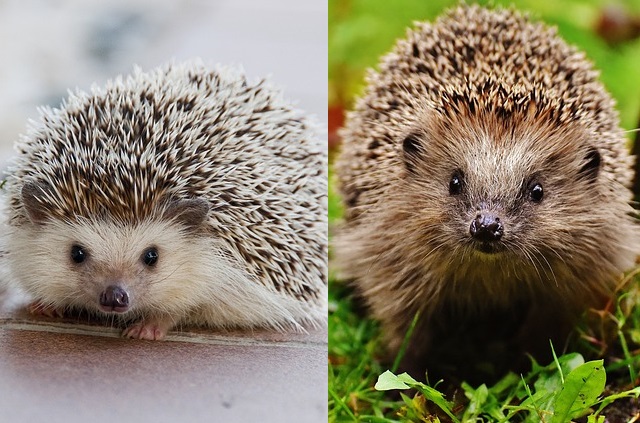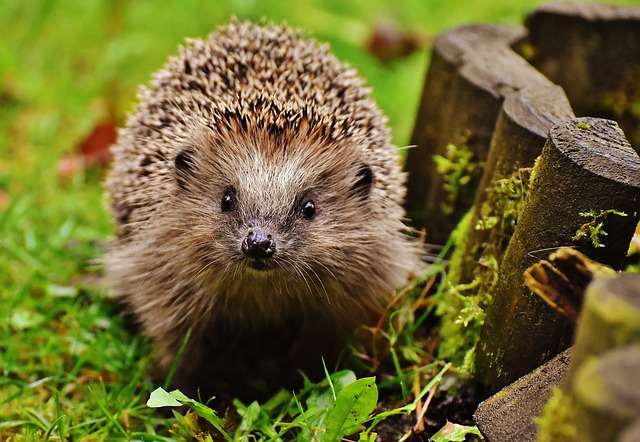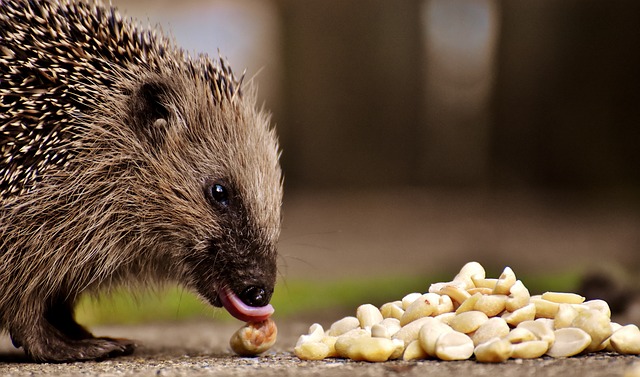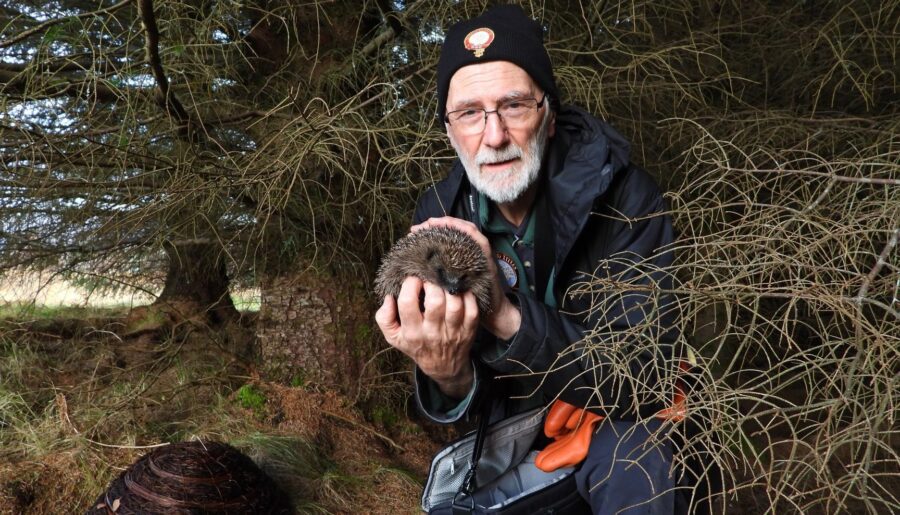The Ultimate Guide to Hedgehogs

Did you know that there were over 30 million hedgehogs in the UK in the 1950s, but today there are less than one million? As part of our commitment to wildlife, we have recently founded a Hedgehog Sanctuary, where injured or sick hedgehogs are provided with around-the-clock care, food, and shelter. In support of this, we have recently launched an Adopt a Hedgehog scheme, to help give these adorable prickly creatures the best chance of survival in Scotland.
We wanted to put together a comprehensive guide to hedgehogs to help people get to know these curious animals a little bit better. If you’ve ever wondered how long do hedgehogs live, what do hedgehogs eat and where to hedgehogs live, read on to get yourself up to speed!
About the West European hedgehog

The West European hedgehog (also known as the European hedgehog, common hedgehog or erinaceus europaeu) is a small nocturnal mammal that is found throughout Europe.
What does a hedgehog look like?
Hedgehogs are most well known for being covered in around 7,000 non-poisonous brown-coloured spines, each 2-3 cm long. The spines are also not barbed, and are actually thick hairs which are hollow. Strong muscles on a hedgehog’s back help the spines to provide it with a deference mechanism when it rolls into a tight ball, and the creature is also renowned for their fur-covered faces and long noses.
The West European hedgehog can be up to 30 centimetres/10 inches long, and they also have a short tail of around 5 centimetres in length – males are usually larger than females too. They typically weigh around 400 grams, but this can increase to 2 kilograms in the autumn when hedgehogs build up sufficient fat reserves to enable them to hibernate through the winter.

West European vs African Pygmy hedgehog
The main difference between West European and African Pygmy hedgehogs is their size! African Pygmy hedgehogs grow to around 8 inches long, and can vary in colour from brown, black, brown and white and all white, whereas West Europeans are brown.
In addition, African Pygmy hedgehogs are bred in captivity for the pet industry, whereas their West European cousins are found in the wild. In terms of their diet, African Pygmies mainly eat cat or dog food, fruits and vegetables, which also differs to what West European hedgehogs eat in the wild, and they also don’t hibernate either.
How long do hedgehogs live?

The average lifespan of a hedgehog is 2-3 years. Unfortunately, foxes and badgers prey on hedgehogs, and human dangers are also a large threat to their welfare. These include falling in ponds or down drains, being hit by a car or even being poisoned by pesticides.
Where do hedgehogs live?

The Western European hedgehog lives in a variety of habitats. These commonly include woodlands, grassland, orchards, vineyards, farmland, parks and gardens. You might also be surprised to learn that when foraging for food, these tiny creatures can travel up to 2 km each night!
As hedgehogs are most active at night, they tend to hide away in bushes and hedges during the day, and can often be spotted hunting on lawns and in flowerbeds at dusk.
What do hedgehogs eat?

Hedgehogs are known as omnivores or insectivores, which mean that their diet consists of a wide variety of insects such as beetles, caterpillars, earthworms, snails, and slugs. In addition, they also eat berries, amphibians and birds’ eggs too.
When do hedgehogs hibernate?

Hedgehogs typically hibernate during the winter, usually from November to March or April. However, this depends on the age and weight of the hedgehog and the weather. They can also wake up several times during the hibernation period, and hibernate in a ‘hibernaculum’, which is a nest of leaves or logs.
When do hedgehogs have babies?

Hedgehogs breed between May and September, with an average litter size of four or five babies born in early to late summer after a pregnancy of 35 days. However, it is rare for mothers to raise more than three of their young to independence, which occurs when they are six weeks old.
What is a baby hedgehog called?

The official name for a baby hedgehog is a hoglet or urchin. They are raised in a nest, which will usually be found in a pile of leaves under a hedge, in a black sack or under a shed or outbuilding. All baby hedgehogs are born with white spines and with their eyes and ears closed, although these open when they are about 14 days old.
I have a hedgehog in my garden; what do I do?

Hedgehogs are most commonly seen from April to October. If you are lucky enough to spot a hedgehog in your garden, or notice common signs such as medium-sized black droppings and bits of insect on the lawn, here as some useful tips to help give your new prickly friend the best possible welcome:
How to make a hedgehog house
To keep your visiting hedgehog safe in your garden and away from the threat of predators, you could make a hedgehog house.
Before you get started, you’ll need:
• A wooden wine crate * Untreated timber (15cm x 2cm, 1.2m length) * Galvanised nails (25mm) * Hosepipe (1m length) * Jigsaw * Hammer * Drill * 25mm wood drill bit
Step 1: Make the tunnel for the hedgehog house by cutting the plywood boards into four 30cm lengths. Next, nail them together lengthways.
Step 2: Using a jig saw, cut a 11cm x 15cm entrance hole out of one side of the base.
Step 3: Nail the tunnel to the wine crate from the inside.
Step 4: Drill a hole in the back of the wine crate and insert the hose – this is important for ventilation.
Step 5: Fill the wine crate with dry leaves, replace the lid and your hedgehog home is ready to go!
Make sure you place your hedgehog home in a quiet, shady spot. In addition, you can also add soft hay for bedding, but you should always ensure you leave some fallen leaves close by so that the hedgehog can add these to its home if it wants to.
What to feed a hedgehog
A common misconception is that hedgehogs can be fed milk. However, as they are lactose intolerant they should only be given meat flavoured dog or cat food and a handful of dog or cat biscuits. Remember, you should only be supplementing their natural diet or helping them during the winter months, so make sure you don’t offer too much of one type of food. In addition, make sure you put out a dish of freshwater each night too.
What to do if you find an injured hedgehog
If you find an injured hedgehog in your garden, put on a pair of thick gardening gloves and pick it up by holding it around the middle in both hands. Line a cardboard box with newspaper and carefully place it inside, along with a small towel or tea towel that it can hide under.
After calling the RSPCA or your local hedgehog rescue centre, if you have noticed that the hedgehog is very poorly or cold, also place a hot water bottle or drinks bottle filled with warm water and wrapped in a tea towel inside. You could also offer it some dog or cat food in a shallow bowl, along with a dish of fresh water.
If you need further advice, we recommend the British Hedgehog Preservation Society as a good first point of contact.
Are Hedgehogs Rare in Scotland?
Hedgehogs are holding on in urban settings, but are disappearing more rapidly than ever in the countryside, as hedgerows and field margins are lost to intensive farming.
The decline appears to be even worse in Scotland than south of the border.

The loss of hedges and woodland across Britain in the drive to create larger fields has resulted in fewer nesting sites and less space for hedgehogs. The large-scale use of pesticides has reduced the amount of food for them to eat. Hedgehogs are generalists, but rely mainly on invertebrates such as beetles in the countryside.
Rough estimates put the hedgehog population in England, Wales and Scotland at about one million, compared with 30 million in the 1950s.
A Sad Scottish Wildlife Story
Highland Titles wondered how to help and was moved by the South Uist hedgehog cull – a sad story with a happy ending.
The story began in the 1970s, when some hedgehogs were released into a garden on the Scottish island of South Uist, presumably to reduce the number of garden pests. Before that time, South Uist had no native hedgehogs.
The hedgehogs soon multiplied and spread, lacking competition, natural predators, pesticides or busy roads. Every spring, the sandy soils along the western beaches of these islands are covered with a carpet of grasses and wildflowers.
This “machair” is a valuable breeding site for globally important bird populations, including dunlin, ringed plover, redshank and oystercatcher. The hedgehogs were soon implicated in a massive decline in populations of these birds through predation on their eggs and chicks.

So fifteen years ago, the Uist Wader Project was formed as a coalition between Scottish Natural Heritage, RSPB Scotland and the Scottish Government, to undertake a cull of the hedgehogs, in order to save the nesting waders.
The project created a division among conservationists, with many groups angry that the much-loved hedgehog, was being killed at the same time as it was under threat on mainland Britain. So in the same year, as the cull began, a coalition of animal welfare organisations and charities formed Uist Hedgehog Rescue (UHR).
UHR agreed that the hedgehogs were an exotic import to the islands and were causing problems to the local ground-nesting birds. However, they offered an alternative solution. They proposed to trap the hedgehogs and relocate them to the mainland, to help boost the declining Scottish population.
During the next three years, they relocated more than 700 hedgehogs, and most importantly, they showed that relocation of the hedgehogs was both feasible and effective. A study using radio-tracking was undertaken by Hugh Warwick, an ecologist and journalist. He demonstrated that most animals survived the process, and so a few weeks later, in early 2007, the cull was stopped.
Instead of killing the animals, Scottish Natural Heritage began to fund the translocation project run by UHR instead. Almost £2.7m has been spent on removing 2441 hedgehogs from the area over the last 13 years – at a cost of £1097-a-hedgehog. Several million pounds will be required to finish the task of removing at least 4000 more hedgehogs.

Help Hedgehogs Thrive in Scotland
If you want to help hedgehogs thrive in Scotland, there are plenty of things you can do to help.
Plant Hedges
Hedgehogs love hedges. I guess the clue is in the name! Not only do they provide shelter, they attract other insects that the hedgehogs love to feed on. Native is best, of course. Try hawthorn.
Piles of Twigs and Leaves
If you can, then create a large pile of twigs and leaves in a safe, sheltered corner of your garden which is sheltered from the rain. This will attract hedgehogs, worms and beetles.
Water
Particularly in the summer, hedgehogs will thank you for leaving out a dish of water. Don’t leave out milk or bread, which can be dangerous for hedgehogs.
Cut A Hole In Your Fence
This may sound a bit strange, but hedgehogs will struggle to access all the pleasantries left behind in your garden if you don’t have a hole in your fence. Just a small hole in the bottom of one plank of wood will make the difference.
Don’t Use Slug Pellets
Slug pellets are lethal to hedgehogs. But hedgehogs rarely eat slugs and snails, and then only when other food is not available. Slugs and snails are the primary carriers for the lungworm which is the biggest killer of hedgehogs (except for humans, our cars and our careless behaviour).
Highland Titles Hedgehog Sanctuary
Highland Titles have now created the largest hedgehog sanctuary in Scotland, with a view to offering a safe home to hedgehogs permanently disabled and, therefore, unsuitable for release.

While the main purpose of our Hedgehog Sanctuary is to be a forever home for hedgehogs not suitable for release, we are also determined to help out any injured hedgehogs that can (and should) go back into the wild. In those cases, the hedgehogs get rehabilitated in our Sanctuary, and once they reach a healthy weight, they are released back to the wild.
So along with the Forever Home, we also have a Hedgehog Hospital and ancillary facilities. This means that instead of relying on external rescue centres, we are able to do the whole rescue and rewilding process ourselves, hopefully boosting the local hedgehog population.
Brought to you by Highland Titles
Highland Titles’ mission is to conserve Scotland, one square foot at a time™. By selling souvenir plots of land, we are funding our Nature Reserves and conservation projects. Join us and become a Lord, Lady or Laird* of the Glen!